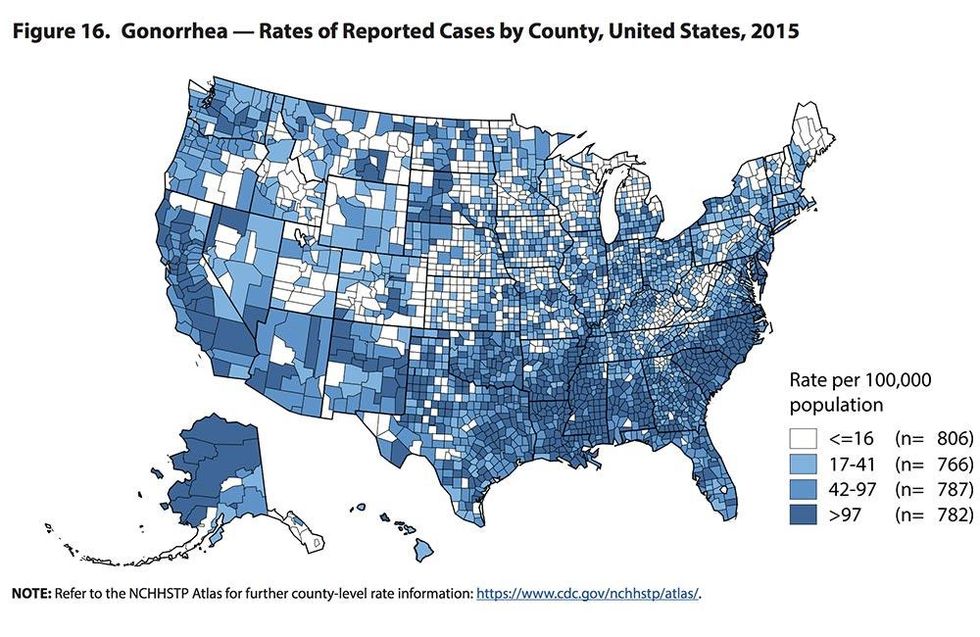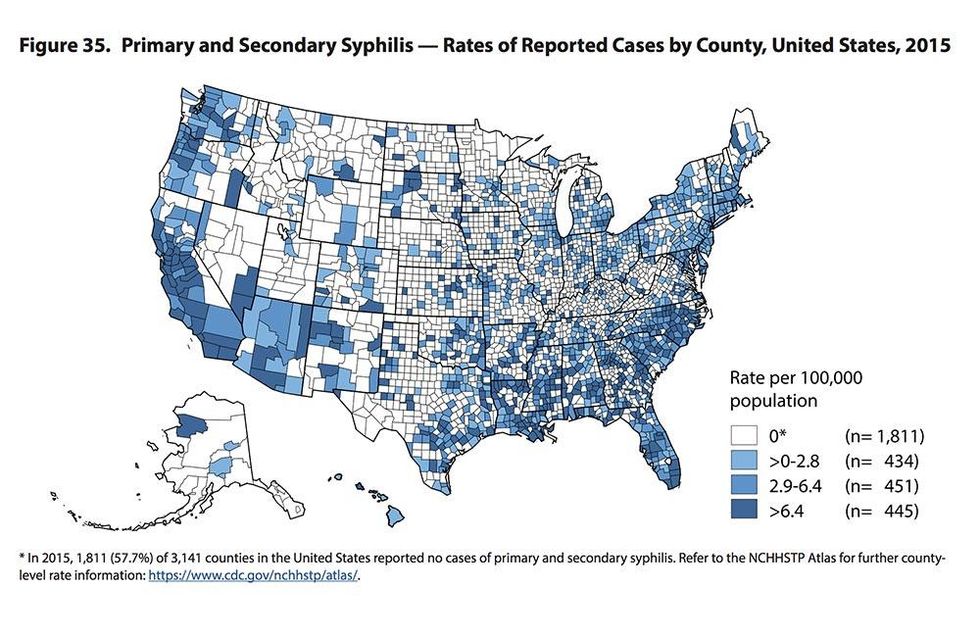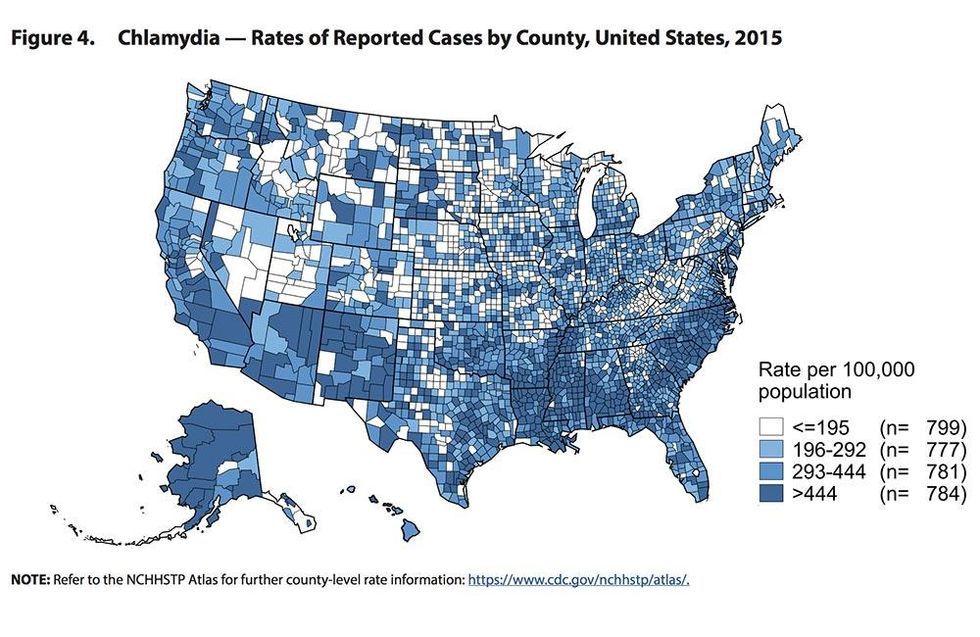Treatment GuideJust DiagnosedSex & DatingAfrican AmericanStigmaAsk the HIV DocPrEP En EspañolNewsVoicesPrint IssueVideoOut 100
CONTACTCAREER OPPORTUNITIESADVERTISE WITH USPRIVACY POLICYPRIVACY PREFERENCESTERMS OF USELEGAL NOTICE
© 2025 Pride Publishing Inc.
All Rights reserved
All Rights reserved
Scroll To Top 




![]()
By continuing to use our site, you agree to our Privacy Policy and Terms of Use.
STIs Are Now at Record Levels (click + to continue reading)
The Centers for Disease Control and Prevention recently released the 2015 Sexually Transmitted Disease Surveillance Report which reveals that sexually transmitted diseases are more widespread now than at any point in the nation's history.
Approximately 1.5 million cases of chlamydia were reported in 2015, representing the highest number of annual cases of any condition ever reported to the CDC. The rates of syphilis increased 19 percent between 2014 and 2015, while gonorrhea increased 13 percent and chlamydia six percent.
“We have reached a decisive moment for the nation,” Dr. Jonathan Mermin, director of CDC’s National Center for HIV/AIDS, Viral Hepatitis, STD, and TB Prevention, said in a press release. “STD rates are rising, and many of the country’s systems for preventing STDs have eroded. We must mobilize, rebuild and expand services — or the human and economic burden will continue to grow.”
The CDC reports that more than half of state and local STI programs have experienced budget cuts in recent years; causing more than 20 health department STI clinic closures in one year alone. These cuts have led to reduced STI testing and eliminated services to those with STIs; furthering the growing epidemic. Unlike HIV, chlamydia, gonorrhea and syphilis are all curable with antibiotics (although a treatment resistant gonorrhea strain is on the horizon). Unfortunately, most STIs go undiagnosed and therefore untreated, leading to severe and often irreversible outcomes, including infertility, chronic pain, insanity, and even death.
Young people and gay and bisexual men continue to face the greatest burden of STIs. Those 15 to 24 years old accounted for nearly two-thirds of chlamydia diagnoses and half of gonorrhea diagnoses; meanwhile gay and bi men represented the majority (82 percent) of new gonorrhea and syphilis cases (as Plus reported earlier, syphilis rates among gay and bi men are up to 340 times higher than among heterosexual men).
“The increasing impact of syphilis among gay and bisexual men makes it clear that many Americans are not getting the preventive services they need," Gail Bolan, Director of CDC’s Division of STD Prevention, said in a statement. "Sexually active gay and bisexual men should be tested for syphilis at least once a year.”
The following slides demonstrate the spread and intensity of sexually transmitted infections across the country.









